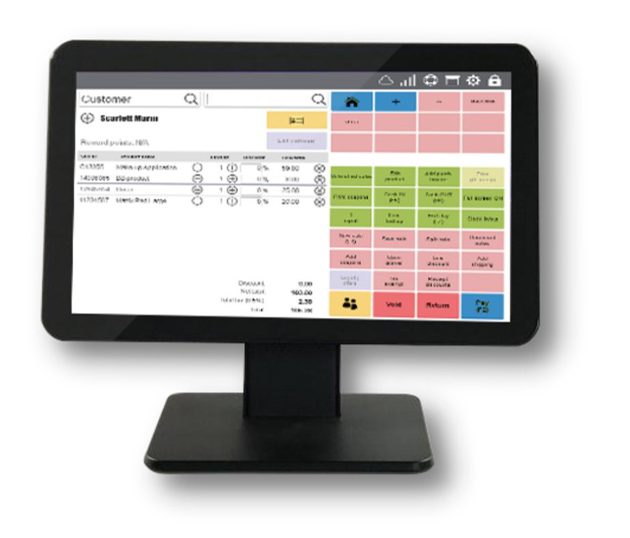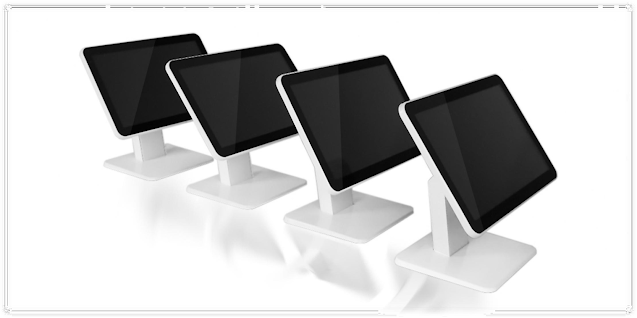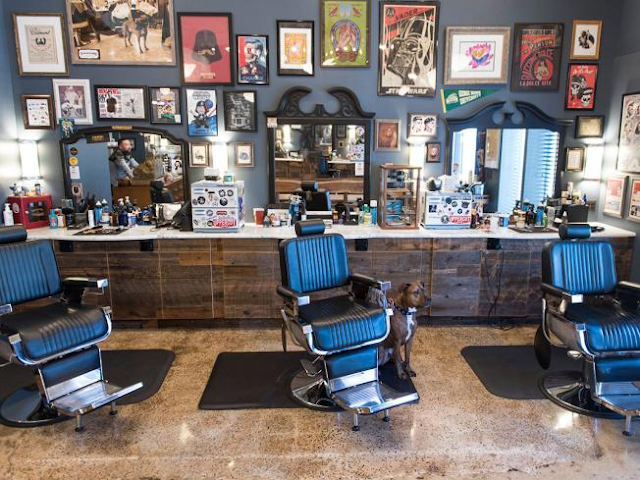touch screen lcd monitor
10/15/ 22/32/40/43/55/65 Inch Poe Lcd Android Tablet Kiosk Wall Mount Touch Screen Monitor Advertising Display
Android Phones Will Get Faster And Bigger In-screen Fingerprint Scanners In 2021
Rear-mounted, side-mounted, in-screen; different phone users like their fingerprint scanners in different places. Each placement has its own benefits, but some would argue that in-screen sensors could do with improvements, and a new technology may be here to make that a reality. In screen fingerprint sensors are slower and less reliable to use than their counterparts, but that may be set to change. Qualcomm - best known for its Snapdragon chipsets used in most top-end Android phones - has announced a second-gen version of its own in-screen fingerprint sensor tech. This 3D Sonic Sensor Gen 2, as it's officially called, has a size of 8mm by 8mm - that's quite a bit larger than the 4mm by 9mm size of the first-gen version. It also apparently captures 1.7x the data as before, and therefore is 50% faster than the previous version. All in all, it sounds like this second-generation take on the in-screen fingerprint sensor could solve lots of problems the placement currently provides. Qualcomm only says that its 3D Sonic Sensor Gen 2 "are expected to debut in mobile devices in early 2021" so we don't know for sure which phones will get it, but it seems likely the upcoming Samsung Galaxy S21 will, purely down to the timings of it all. That phone is set to debut in on January 14. After that, we could see the fingerprint sensor pop up in the Oppo Find X3, OnePlus 9 and more top-end phones that launch in the year. We likely won't see it in the Xiaomi Mi 11 or Vivo X60, as while those haven't technically launched globally, they have debuted in China. If those phones had the Sonic Sensor Gen 2, Qualcomm wouldn't be talking about a 'debut'. We'll have to wait and see when we get a glimpse (or touch) of this new in-screen fingerprint sensor to offer a verdict on the new tech, and we'll make sure to test whether it fixes the problems of its type.
Hands-On: Streamlined Crestron 70 Series Touch Screens Provide User-Friendly Ergonomics
Crestron's new 70 Series wall mount Touch Screens are available in a choice of 5-, 7- or 10-inch screen sizes. A few months ago, I wrote about Crestron Home and its ability to serve as a modern home control and automation system. Back in September, I also pointed out that with a solid network backbone (in my case an Access Networks system) that navigating the system was easy with devices that include Crestron’s 60 Series 10-inch Touch Screen. Fast forward a couple of months and Jon and Matt Herbster, owners of the Danvers, Mass.-based integration firm Audio Innovations, swung by my home to add some Crestron Home-enabled light switches and a 70 Series 10-inch Touch Screen to replace the 60 Series unit that was initially installed. Crestron 70 Series Touch Screen Features and Installation A lot of the changes associated with the 70 Series Touch Screens are subtle, yet highly effective in improving a really great user-friendly experience. Starting with the look of the 70 Series Touch Screens, they are sleeker, with a smaller footprint and more room friendly. I should point out the 70 Series Touch Screens are available in a choice of 5-, 7- and 10-inch sizes, and Crestron also offers a tabletop version in a choice of 7-inch or 10-inch screen sizes. The Wi-Fi-enabled touch screens incorporate upgraded processors and higher screen resolutions when compared to previous generation models. One of the other advantages of the tabletop models according to Crestron, is that homeowners can place these control interfaces in locations such as kitchen countertops, nightstands and coffee tables. Installation of the 10-inch wall mount 70 Series took the Herbster brothers literally just a few minutes. CE Pro Features Available in wall mount and tabletop versions, and 5-, 7- and 10-inch screen sizes The 70 Series Touch Screens support legacy and HTML5 custom graphics, and Crestron Home Crestron incorporates the latest industry processors to ensure fast response times and overall reliability The touch panels include high-resolution screens to display graphics with clarity Crestron says the 70 Series Touch Screens support Sonos’ new S2 app for better control integration with its systems Designed for a quick swap, all an integrator needs to do is grip the edges of the touch panel and give a tug. Through the touch screen’s bracket system and single cable connection, the old touch screen popped out of the bracket easily. After disconnecting the network cable on the back side of the old touch screen and connecting it to the new one, the 70 Series 10-inch model snapped into place with just about no effort. A few minutes later the new 70 Series uploaded my Crestron Home system’s programming and that was pretty much the entire installation. I’ll also note really quickly that installing a new touch screen is easy too: Just use the supplied template to cut the proper size hole in the wall, insert the installation bracket and pull the network cable through the hole to make it accessible for its connection to the rear panel of the touch panel. Performance and Final Thoughts Due to its slimmer depth and overall smaller footprint, the new touch screen integrated into my kitchen space at a more room friendly level than the previous unit. Interacting with the touch screen, I think it does respond a little faster than the older version. It is an improvement in every way when compared to the 60 series. The industrial design is sleeker, the products’ footprints are smaller, and the new panels out-perform the previous generation’s resolution and responsiveness. Using Crestron Home via the touch screen is easy: Hitting the “Home” button brings you back to the main page of the interface. In my case, that page features “house access” and “climate.” Below those options are the aforementioned “Home” button and the “Rooms” button. Clicking the “Rooms” button will bring up every zone that has Crestron-connected equipment. Users can scroll up and down this list, which includes customized names and graphics. Once they find the zone or room they are looking for it’s as simple as selecting the action you want to command. In a simple zone like my “Halls and Stairs,” all we have is lights. We can select on or off or drill down into specific switches such as “foyer chandelier” or “basement landing” to not only turn on or off, but we can also dim too. The 70 Series Touch Screen’s Sonos integration also works well. Sonos is a popular whole-house audio product line and with the Sonos system in my home running the S2 operating system, Crestron integration is important in my house. Accessing the service is simple. Select a room that has audio, then select audio. Since Sonos is our only music source the touch screen asks for the selection of a source, which as I noted is Sonos. Once a room is selected, I can select audio content from my “Sonos favorites.” At this point access is somewhat limited, but as I noted with the complete Home review a couple of months ago—Crestron Home at this point is a 15-month-old platform and Crestron’s R&D team is literally adding to it every day. This means that just because the system doesn’t have a function or option now, it doesn’t mean it won’t have it in a couple of weeks or a month. How this applies when evaluating the touch screen is that for more advanced Sonos functionality I have to work through the Crestron Home app. Using the app, I can drill down into the S2 OS to select my streaming services, my playlists, etc. In order to do this, I just select the Sonos logo at the top of the app screen. Based on my experience, like the expanded Sonos functionality, other features that integrators and their clients are looking for are coming to Crestron Home. I don’t mind waiting while Crestron vets these system additions because I am confident that once these functions become available, they will work reliably. I believe, based on past experience, Crestron is not like Microsoft or Android. My belief is that Crestron is Apple-like with its R&D and desire to launch products and features that are fully tested before public launch. Anyway, getting back on point about the 70 Series Touch Screen. It is an improvement in every way when compared to the 60 series. The industrial design is sleeker, the products’ footprints are smaller, and the new panels out-perform the pervious generation’s resolution and responsiveness. I think homeowners just like myself will appreciate the advantages of the 70 Series wall mount and tabletop touch screens. I highly recommend to Crestron dealers to showcase these products to their clients. CE Pro Final Verdict Pros: Seamless user experience regardless of whether using the Home app or the 70 series touch panels From the integrator perspective, the 70 Series is a seamless upgrade from its predecessor the 60 Series. Sonos S2 app integration makes accessing Sonos ecosystem easy. Cons: No cons with the 70 Series. The transition from the 60 Series was pain-free and it took just a few minutes to swap out touch panels Again, this is not a con, but Crestron Home is a young platform so be patient to allow Crestron to add features to the platform About the Author Bob is an audio enthusiast who has written about consumer electronics for various publications within Massachusetts before joining the staff of CE Pro in 2000. Bob is THX Level I certified, and he's also taken classes from the Imaging Science Foundation (ISF) and Home Acoustics Alliance (HAA). Bob has also served as the technology editor for CE Pro's sister publication Commercial Integrator. In his personal time beyond his family, he's studied guitar and music theory at Sarrin Music Studios in Wakefield, Mass., and he also studies Kyokushin karate at 5 Dragons and Brazilian jiu-jitsu at Binda Brazilian Jiu Jitsu. Both martial arts schools are located in Haverhill, Mass.View Robert Archer's complete profile
21 Best Android Accessories: Your Ultimate List
There’s a massive array of Android smartphones out there, and all that variety means that there are tons of cool Android accessories to choose from. But with a number of second-rate smartphone gadgets flooding the market, it can be hard to separate the wheat from the chaff. That’s why we’ve curated a list of the very best Android smartphone accessories. Whether you’re into music, photography, or just want the latest gadgets, you’ll be sure to find something interesting on this list.






Comments
Post a Comment